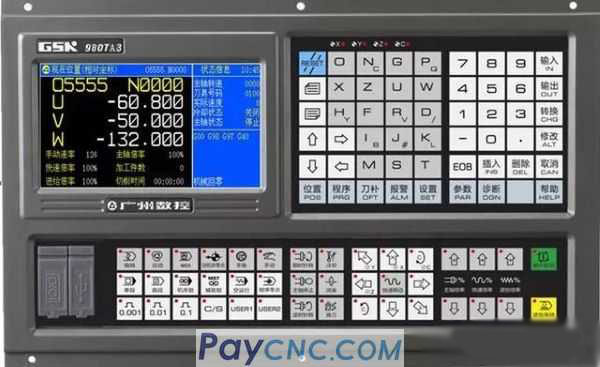What to do before CNC programming
For our machining center, programming is indispensable before any production operation. Programming directly affects the efficient production and safe processing of our workpieces. Then what work must be done before programming? What are the precautions? Next, the editor will give you a detailed introduction
After determining the processing technology, you must understand before programming:
1. Workpiece clamping method;
2. The size of the workpiece blank ---- in order to determine the scope of processing or whether multiple clamping is required;
3. The material of the workpiece-in order to choose which tool to use for processing;
4. What are the stocked knives? Avoid modifying the program during processing because there is no such tool. If you must use this tool, you can prepare in advance.
What are the principles for setting the safety height in programming?
The principle of setting the safety height: generally higher than the highest surface of the island. Or set the programmed zero point on the highest surface, so as to avoid the danger of hitting the knife to the greatest extent.
After the tool path is compiled, why post-processing is necessary?
Because the address codes and NC program formats that can be recognized by different machine tools are different, the correct post-processing format must be selected for the machine tool used to ensure that the compiled program can run.
How to choose the knife route?
The path of the tool is the path and direction of the tool relative to the workpiece in the index control process. The reasonable choice of the processing route is very important, because it is closely related to the processing accuracy and surface quality of the parts. When determining the path of the knife, the following points are mainly considered:
(1) Ensure the machining accuracy requirements of the parts.
(2) Convenient numerical calculation and reduce programming workload.
(3) Seek the shortest processing route, reduce the empty tool time to improve processing efficiency.
(4) Try to reduce the number of blocks.
(5) To ensure the roughness requirements of the workpiece contour surface after processing, the final contour should be processed continuously in the last pass.
(6) The advance and retreat (cut-in and cut-out) route of the tool should also be carefully considered to minimize stopping at the contour (a sudden change in cutting force causes elastic deformation) and leaving tool marks, and avoid being perpendicular to the contour surface Scratch the workpiece under the knife.

Which aspects should be paid attention to when determining the clamping method of the workpiece?
The following three points should be paid attention to when determining the positioning reference and clamping plan:
(1) Strive to unify the design, process, and programming calculation benchmarks.
(2) Minimize the number of clamping times, as far as possible to be able to process all the surfaces to be processed after one positioning.
(3) Avoid using manual adjustment schemes.
(4) The fixture should be opened smoothly, and its positioning and clamping mechanism should not affect the cutting tool during processing (such as collision). When encountering such situations, Chenghai CNC experts suggest that you can use a vise or add a bottom plate to pull the screw. Mounting.
What principles should be followed in the arrangement of the processing sequence?
The arrangement of the processing sequence should be considered according to the structure of the part and the condition of the blank, as well as the need for positioning and clamping. The important point is that the rigidity of the workpiece is not destroyed. The order should generally be carried out according to the following principles:
(1) The processing of the previous process cannot affect the positioning and clamping of the next process, and the general machine tool processing processes should also be considered comprehensively.
(2) Carry out the inner cavity adding process first, and then the outer shape processing process.
(3) It is best to connect the processes of machining with the same positioning, clamping method or the same tool to reduce the number of repeated positioning, tool change times and the number of moving platens.
(4) For the multiple procedures carried out in the same installation, the procedure should first be arranged with less rigid damage to the workpiece.
The division of numerical control processing procedures can generally be carried out according to the following methods:
(1) The tool centralized ordering method is to divide the processes according to the tools used, and use the same tool to process all the parts that can be completed on the part. Use the second knife and the third knife to complete other parts they can complete. This can reduce the number of tool changes, reduce idle time, and reduce unnecessary positioning errors.
(2) According to the processing part order method, for parts with a lot of processing content, the processing part can be divided into several parts according to its structural characteristics, such as inner shape, shape, curved surface or plane. Generally, the plane and positioning surface are processed first, and then the hole is processed; the simple geometric shape is processed first, and then the complex geometric shape is processed; the parts with lower precision are processed first, and then the parts with higher precision requirements are processed.
(3) For parts that are prone to deformation by roughing and finishing, the shape needs to be adjusted due to the deformation that may occur after roughing. Therefore, in general, all the rough and finishing processes must be separated. . In summary, when dividing the process, we must flexibly grasp the structure and manufacturability of the parts, the function of the machine tool, the number of parts CNC machining content, the number of installations and the production organization of the unit. It is also recommended to adopt the principle of process concentration or the principle of process dispersion, which should be determined according to the actual situation, but must strive to be reasonable.
After determining the processing technology, you must understand before programming:
1. Workpiece clamping method;
2. The size of the workpiece blank ---- in order to determine the scope of processing or whether multiple clamping is required;
3. The material of the workpiece-in order to choose which tool to use for processing;
4. What are the stocked knives? Avoid modifying the program during processing because there is no such tool. If you must use this tool, you can prepare in advance.
What are the principles for setting the safety height in programming?
The principle of setting the safety height: generally higher than the highest surface of the island. Or set the programmed zero point on the highest surface, so as to avoid the danger of hitting the knife to the greatest extent.
After the tool path is compiled, why post-processing is necessary?
Because the address codes and NC program formats that can be recognized by different machine tools are different, the correct post-processing format must be selected for the machine tool used to ensure that the compiled program can run.
How to choose the knife route?
The path of the tool is the path and direction of the tool relative to the workpiece in the index control process. The reasonable choice of the processing route is very important, because it is closely related to the processing accuracy and surface quality of the parts. When determining the path of the knife, the following points are mainly considered:
(1) Ensure the machining accuracy requirements of the parts.
(2) Convenient numerical calculation and reduce programming workload.
(3) Seek the shortest processing route, reduce the empty tool time to improve processing efficiency.
(4) Try to reduce the number of blocks.
(5) To ensure the roughness requirements of the workpiece contour surface after processing, the final contour should be processed continuously in the last pass.
(6) The advance and retreat (cut-in and cut-out) route of the tool should also be carefully considered to minimize stopping at the contour (a sudden change in cutting force causes elastic deformation) and leaving tool marks, and avoid being perpendicular to the contour surface Scratch the workpiece under the knife.

Which aspects should be paid attention to when determining the clamping method of the workpiece?
The following three points should be paid attention to when determining the positioning reference and clamping plan:
(1) Strive to unify the design, process, and programming calculation benchmarks.
(2) Minimize the number of clamping times, as far as possible to be able to process all the surfaces to be processed after one positioning.
(3) Avoid using manual adjustment schemes.
(4) The fixture should be opened smoothly, and its positioning and clamping mechanism should not affect the cutting tool during processing (such as collision). When encountering such situations, Chenghai CNC experts suggest that you can use a vise or add a bottom plate to pull the screw. Mounting.
What principles should be followed in the arrangement of the processing sequence?
The arrangement of the processing sequence should be considered according to the structure of the part and the condition of the blank, as well as the need for positioning and clamping. The important point is that the rigidity of the workpiece is not destroyed. The order should generally be carried out according to the following principles:
(1) The processing of the previous process cannot affect the positioning and clamping of the next process, and the general machine tool processing processes should also be considered comprehensively.
(2) Carry out the inner cavity adding process first, and then the outer shape processing process.
(3) It is best to connect the processes of machining with the same positioning, clamping method or the same tool to reduce the number of repeated positioning, tool change times and the number of moving platens.
(4) For the multiple procedures carried out in the same installation, the procedure should first be arranged with less rigid damage to the workpiece.
The division of numerical control processing procedures can generally be carried out according to the following methods:
(1) The tool centralized ordering method is to divide the processes according to the tools used, and use the same tool to process all the parts that can be completed on the part. Use the second knife and the third knife to complete other parts they can complete. This can reduce the number of tool changes, reduce idle time, and reduce unnecessary positioning errors.
(2) According to the processing part order method, for parts with a lot of processing content, the processing part can be divided into several parts according to its structural characteristics, such as inner shape, shape, curved surface or plane. Generally, the plane and positioning surface are processed first, and then the hole is processed; the simple geometric shape is processed first, and then the complex geometric shape is processed; the parts with lower precision are processed first, and then the parts with higher precision requirements are processed.
(3) For parts that are prone to deformation by roughing and finishing, the shape needs to be adjusted due to the deformation that may occur after roughing. Therefore, in general, all the rough and finishing processes must be separated. . In summary, when dividing the process, we must flexibly grasp the structure and manufacturability of the parts, the function of the machine tool, the number of parts CNC machining content, the number of installations and the production organization of the unit. It is also recommended to adopt the principle of process concentration or the principle of process dispersion, which should be determined according to the actual situation, but must strive to be reasonable.
 USD
USD




